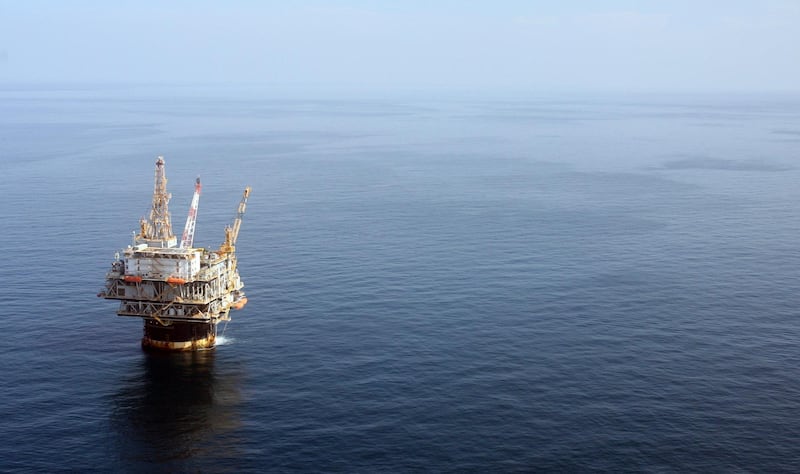A wave of oil industry consolidation has been expected for some time.
Chevron may have triggered that wave, with its $33 billion (Dh121.2bn) bid for Texas-based Anadarko, a US shale player also strong in Africa. It raises the strategic question: is it now possible to create and sustain a supermajor without any significant exposure to the world’s most important hydrocarbon-producing region?
Occidental had reportedly made a slightly higher offer, $70 per share versus Chevron’s $65, but Anadarko preferred the greater certainty of a deal with the supermajor. If consummated, the deal will be the biggest upstream oil acquisition since Shell’s $66bn buy of liquified natural gas-focused BG in 2016.
The timing is understandable: Anadarko’s stock slumped in February after its earnings came in below expectations. Its share price is well down over the past year, and is less than half its high in mid-2014, while competitors have mostly recovered from last October’s oil price slump.
The more interesting question, though, is what this deal tells us about the strategy of Chevron and its supermajor peers.
Anadarko’s most obvious attraction is its American shale position, particularly in the Delaware basin, part of the famous Permian basin of west Texas.
Exxon Mobil’s buy of XTO, a shale company, for $41bn in 2009, was generally seen as a failure, with gas prices slumping afterwards. The supermajors were thought to be too slow, too set in their ways and with too high fixed costs to flourish in the competitive shale patch.
But after years, when independent companies made all the running, the supermajors have been stepping up. Exxon Mobil bought Delaware basin assets from the Bass family for $6.6bn in January 2017, BP paid $10.5bn last July for a package of shale assets from mining firm BHP, and in December, Shell was rumoured to be in talks to buy Endeavor, another shale player, for $8bn.
The shale sector has delivered tremendous growth but very little cash to investors. The supermajors plan to change this by leveraging their financial and operational strength, consolidating adjacent assets, cutting costs with economies of scale and applying new technologies such as carbon dioxide injection to boost recovery. They will invest in midstream infrastructure to improve pricing of oil and gas at the wellhead and generate additional value by bringing hydrocarbons to their Gulf of Mexico coast refineries.
So Chevron’s purchase has been seen by US analysts as a doubling-down on shale. It is, but this is not the whole story. It could instead have bought another large company focused entirely on shale, such as EOG, Pioneer or Concho Resources. Anadarko’s portfolio has two other attractions: deep-water, where it fills well with Chevron in the Gulf of Mexico; and has exposure to the hotspot of Guyana and LNG.
After completing the giant and enormously over-budget Gorgon project in Australia and the Angola LNG project, which had serious problems starting up, Chevron needed to find more growth in this key area. The giant resources held by Anadarko in Mozambique will help plug the gap and the supermajor has the capital to move them ahead faster than the Texan company could.
Chevron's upstream portfolio to 2025 looks as strong as those of Exxon Mobil and Shell, now its two peers. With Anadarko, its 2018 production would have been 3.6 million barrels of oil equivalent per day, compared to 3.8 million boepd for ExxonMobil and Shell's 3.7 million boepd. The three "ultra-majors" have now pulled away from BP, Total and Eni.
Beyond 2025, though, Chevron's prospects were much weaker. Building on Mozambique's giant gas finds and drilling the full potential of the Permian basin, gives Chevron a long runway.
The enlarged company has one obvious hole: the Middle East. Anadarko has long had a strong position in Algeria but it hardly invests there and the recent removal of President Abdelaziz Bouteflika will probably not encourage it until the dust settles. It looks a likely candidate for Chevron to sell.
Chevron has a small role in the Kurdistan region of Iraq, it may bid for the expansion of Qatar’s LNG plants and it operates in the Saudi-Kuwait Neutral Zone, shut down by a political dispute since 2015. It might also enter Bahrain’s new offshore shale oil play and is in discussions for field developments with the federal Iraqi government. Compared to the giant footprint in Abu Dhabi, Oman, Iraq and Egypt enjoyed by Shell, Exxon Mobil, Total, BP, Eni, Occidental and ConocoPhillips, this is small potatoes.
The new Chevron is also not strong in the world’s other major producing region, the former Soviet Union. It operates the giant Tengiz field in Kazakhstan but has little else. So it is a bet that a supermajor can grow and flourish on the basis of higher-cost resources.
At today’s oil prices, the deal looks good but when they fall again, as they inevitably will some time, it has to be sure it will be one of the most competitive producers. Exxon Mobil, Shell and BP are all growing in shale and may seek new deals to match the Anadarko transaction but their portfolios are more balanced.
Conversely, Eni and Total’s strategies seek growth from exploration, lucrative but risky, and the Middle East, low-cost but highly taxed and in some places, politically volatile. If Chevron’s plans work out, it will sustain swift expansion of US oil output, keeping Opec and its allies under pressure.
But that means lower oil prices – so the Californian giant has to avoid becoming the victim of its own success.
Robin Mills is CEO of Qamar Energy, and author of The Myth of the Oil Crisis







